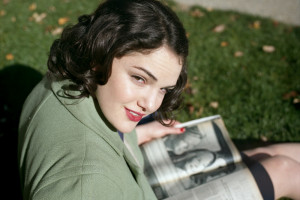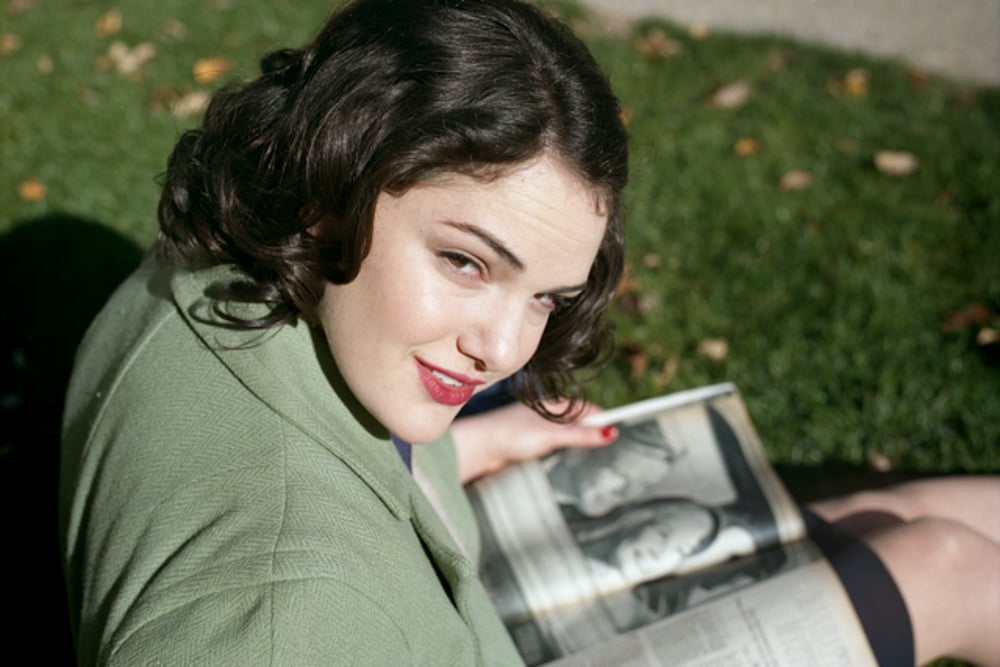
Director Matt Wolf has made waves recently with “Teenage,” a documentary about the birth and development of youth culture from the late 19th century to the mid-20th century. The film, which showed at festivals ranging from BFI London to Tribeca, opens today in Berkeley and San Francisco. Wolf spoke with us about generation gaps, activism and the creation of “living collage.”
The Stanford Daily (TSD): Why make a documentary about teenagers?
Matt Wolf (MW): It’s based on a book by Jon Savage. I was a fan of Jon Savage because he wrote this book, “England’s Dreaming,” which is really the definitive history of punk. When I heard about his book “Teenage,” I was really intrigued because I’m obsessed with hidden histories and forgotten biographies. I don’t see [the documentary] just as a film about teenagers. I see it as a film about the secret prehistory of teenagers and youth culture. We all think, teenagers, they must have begun in the 1950s with James Dean and rockers and Beatniks. But there’s actually this complex and unknown prehistory.
What I noticed when I was reading the book was that Jon’s punk perspective really colored his depiction of early 20th century history. I thought that was really intriguing and I thought, ‘What if I tried to make a historical documentary that moves away from the Ken Burns, PBS style of authoritative experts and, instead, does something that’s inspired by that punk sensibility?’
TSD: By punk, do you mean the spirit of rebellion?
MW: That’s an interesting way to look at it. I think I mean something a little more specific. Punk is obviously specific music, specific bands in the 1970s. Early on, when I was trying to get to the bottom of the idea of punk, I was talking to Jon. He said in the 1970s, he observed young punk kids taking clothes from previous generations like rocker suits and zoot suits, and they’d cut them up and literally reassemble them with safety pins.
He called that “living collage.” I thought, that’s a crazy cool idea for filmmaking—picking and choosing aspects from the past…in my case, clips of footage, voices lifted from teenage diaries and collaging them into this living work that’s contemporary. I think that’s what I mean by punk is this strategy of living collage.
TSD: You’ve called the documentary a “love song to adolescence.” What does that mean?
MW: I think it’s celebratory. It’s at once a call to arms and a celebration of the power of youth and the substance and significance of teenage rebellion. In a way, I made this film out of a love for the teenage subjects that were in it…out of a belief that what they did was trailblazing and laid the groundwork for a lot of the culture and politics that really inspire me.
TSD: The documentary includes archival footage and “recreated portraits.” How did you balance the archival footage with the parts that you chose to film?
MW: I’ve used recreations and fake archival footage before. I thought it was important to shoot on 16mm to make this footage look like actual archival footage.
I wanted that device to have a purpose. For me, it goes back to this idea of hidden histories and forgotten biographies. The stories of Brenda Dean Paul, Melita Maschmann, Tommie Scheel and Warren Wall begged to be told. Those four characters form a composite portrait of the teenager that was about to be born. I thought, those people were never filmed or photographed. I have to film them myself.
Otherwise, I wanted the film to have this living collage feeling. I used all preexisting material and stuff I shot that looks like preexisting material to create that effect.
TSD: The film seems to suggest social rebellion was the way teenagers were trying to define their role in society. Do you see similar movements today despite the fact that they’ve become a more acknowledged demographic?
MW: I think a lot of the patterns in the film repeat themselves because there is a generation gap. There’ll probably always be a generation gap where adults are trying to control youth because they represent the future and young people are pushing back trying to create their own world. That disjunction breeds a certain type of rebellion.
In terms of recent political and cultural movements, I look at something like Pussy Riot, which seems really similar to the swing kids, in a way. I look at the Occupation movements and student protest movements around the world that are not youth movements, per se, but that youth are at the center of because it’s about reimagining a different future and reversing the mistakes and problems that adults created.
TSD: You mentioned the four teenagers that you featured in the film. Did you identify with any one of them more strongly than the others?
MW: Tommie Scheel, the German swing kid, is my favorite because he represents the intersection and colliding of pop and politics. He’s doing what kids do, he’s obsessed with music and fashion, he likes to party, but the context and circumstances in which he’s doing it is deeply political. He’s risking his life, and, in a sense, he’s being an activist, celebrating degenerate culture. I think that is really powerful and I could imagine myself being involved in something like that.
TSD: What were you like as a teenager?
MW: I was a super politicized gay teenager. I did a lot of activism in San Francisco. I grew up in San Jose. I started Gay Straight Alliance and would lobby my state representatives and stuff like that. At the same time, I was pretty dreamy. I was obsessed with independent music and underground records and I would go to the movie theater by myself and see all the independent films. This was like in the mid ‘90s. I always had a side of me that was interested in art and culture that felt alternative and also politics that related to being gay. As an adult making films, it’s about finding the intersection of those two things.
TSD: You’ve said before that, as a teenager, you felt a responsibility to change the world. Do you think that that’s something that was particular to that age?
MW: Yes, because I don’t necessarily feel that way now. As sad as that might be, I don’t feel like I can change the world because I’m an adult that’s worn down by experience and my thinking’s more reality-based. That doesn’t mean activism isn’t vital and important. It just means that, as a teenager, my emotional relationship to politics and my role within history-making was much more immediate than this role. I really felt like I could change the world and I don’t necessarily feel that as an adult. I think there is something about being young, about not being hindered and burdened by experience, to feel that sense of possibility and that power. That power is palpable and something can be done with it.
TSD: Are there are elements of your teenage self that still reside with you today?
MW: My main beliefs and values were formed as a teenager, and I live by them everyday. I think I changed a lot and the way that those values and ideals present themselves evolved over time. I wrote letters to myself, manifestos, as a teenager that basically outlined exactly what I believe in and what I do today. I have a feeling that a lot of people form some of their core beliefs at that time in their lives.
TSD: This documentary captures that energy and importance of what it’s like being a teenager and forming those values. Do you think filmmaking or art in general gives you a space to hold onto that?
MW: I think being an artist is an opportunity to ask complicated questions you don’t necessarily have answers to and to speak in languages that you’ve never spoken in before, that maybe nobody’s spoken in before. A lot of times, people don’t want to ask questions or people want answers to the questions that they have. Living with ambiguity and uncertainty and abstraction is something artists are good at.
TSD: What do you hope that audiences who watch the film will gain from it?
MW: A different attitude about youth, a sense that something very old can feel very new and that the past can be instructive about the present. The through line for me of the film is about teenage rebellion, that it’s not just an emotional rite of passage, that there’s real political substance to it, that it can lead towards change, that it’s catalyzing, that young people play a significant role. We shouldn’t get older and then one day look at youth and say, they’re not as creative or interesting as we were, they’re all just conformists, because that’s what everybody does when they get old.
Contributing author: Marin Reeve.
Contact Madeleine Han at mhan95 “at” stanford.edu.
